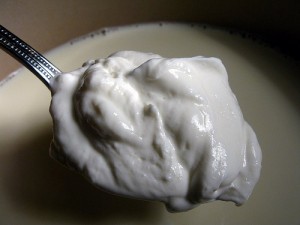In the comments on this weblog over the years I’ve learned a lot of interesting things about South Asian ethnography. One component which has been notable is the sense of ethnic pride of Punjabis, and in particular Jatts. Some of this is rather standard racism against other South Asians, especially South Indians and Bengalis in relation to whom they feel aesthetically superior. But other assertions of distinction are not so charged.
One of the aspects of Jatt identity seems to be the conception that they are descended from “Scythians,” what in a South Asian context would be termed Saka. When some Jatt commenters with whom I had amicable relationships with would bring this up I would gently mock them. My personal stance is that South Asians have an unhealthy obsession with presumed foreign origin, as if being South Asian is somehow shameful. This is very evident amongst Muslims for obvious reasons, insofar as Islam came to the subcontinent from West Asia. But I’ve encountered the same stance amongst Hindus. For example, Kashmiri Pandits explaining their peoples’ Persian origins.
But whatever the demerits of the excessive overall fixation on exogenous origin, I now believe that I wrongly dismissed out of hand the idea that Jatts in particular have some Scythian origin. The reason are a series of results coming out of the Harappa Ancestry Project. To be concise, it does seem that Jatts have a small but consistent proportion of northern Eurasian ancestry which sets them apart from other Punjabis. The most parsimonious explanation to my mind is that the Sakas did indeed have a genetic impact. This does not mean that I have a high confidence in this historical model. But I was clearly in the wrong in dismissing the Scythian origin myth out of hand. For that, I apologize. Also, please note that I am not claiming here that the preponderance of Jatt ancestry is Scythian. It is not. Rather, there may have been a Scythian overlay upon a typical Punjabi substrate.
If you are curious to learn more, please see the comments at the Harappa Ancestry Project. Continue reading →
 When I was younger, yogurt repulsed me. This was no small thing because my parents come from southern India, where yogurt seems to serve as a sort of digestif without which meals don’t feel complete. There was always a pot of homemade yogurt in the fridge or on the kitchen table.
When I was younger, yogurt repulsed me. This was no small thing because my parents come from southern India, where yogurt seems to serve as a sort of digestif without which meals don’t feel complete. There was always a pot of homemade yogurt in the fridge or on the kitchen table. I just recently heard that
I just recently heard that  About
About  The question of national and individual origins has a corporeal and concrete dimension, and a mythic and symbolic one. This is evident in the religious traditions which most of the world’s populations adhere to. Israel is both literally and figuratively a descent group. They issue from the tribes descended from the sons of Jacob. Those who convert into the Jewish religion customarily also convert into the Jewish nation, and so figuratively share the same descent. Similarly, among Muslims there is a particular prestige given over to the descendants of Muhammad, the Sayyids. Within Hinduism the importance of descent groups manifests generally in terms of the endogamy prevalent among South Asians, and also in specific cases, such as with
The question of national and individual origins has a corporeal and concrete dimension, and a mythic and symbolic one. This is evident in the religious traditions which most of the world’s populations adhere to. Israel is both literally and figuratively a descent group. They issue from the tribes descended from the sons of Jacob. Those who convert into the Jewish religion customarily also convert into the Jewish nation, and so figuratively share the same descent. Similarly, among Muslims there is a particular prestige given over to the descendants of Muhammad, the Sayyids. Within Hinduism the importance of descent groups manifests generally in terms of the endogamy prevalent among South Asians, and also in specific cases, such as with